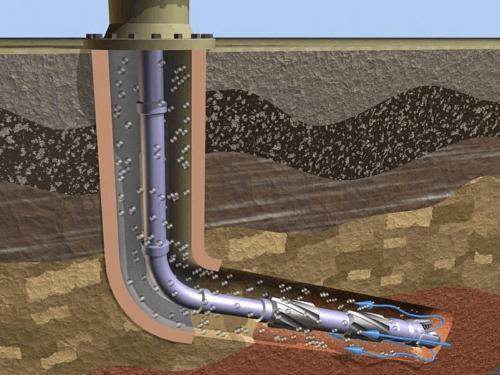
Cementing is divided into three steps: casing running, cement injection, wellhead installation and casing pressure test.
Casings are available in different sizes and steel grades. Surface cementing usually uses 20-13 3/8 inch casing, most of which use low-grade "J" grade casing. Technical casing usually uses 13 3/8~7 inch casing, which uses higher grade steel. Cementing of oil layer casing usually uses 7~5 inch casing, the steel grade strength is the same as that of technical casing. Design the strength of the casing according to the application, the predicted pressure of the formation and the casing depth, and determine the wall thickness, steel grade and thread type of the casing.
The casing is different from the drill pipe. It is a pipe that is run at one time without a thickened part and the length is not strictly specified. In order to ensure the cementing quality and smooth casing insertion, the structural design of the casing string must be done.
It is a key process after the casing is lowered into the well. Its function is to seal the annular space between the casing and the well wall to seal the oil, gas and water layers and make the casing a channel for oil and gas to the well.
Oil well cement is an important material for sealing the annular space of casing and well wall. Because the well is deep and shallow, there are normal pressure, normal temperature, high pressure and high temperature underground, and the formation also contains various chemical substances, so oil well cement is required to have a wide range of adaptability. There are 9 grades and three types of oil well cement used in my country. Different grades and types of cement are suitable for different underground conditions. Therefore, choosing cement according to the depth and temperature of the well is the primary task of cementing operations.
Cement grade
The limited cement grades still cannot meet the performance requirements of cement slurry. The G and H cements used mostly use additives to adjust their performance, which is the most commonly used cement. Additives can be divided into seven categories: density adjustment agents, setting time adjustment additives, loss control additives, fluid loss additives, viscosity control agents, special additives for abnormal conditions, etc. One grade of cement can use one or more additives.
After the casing is installed, immediately connect the circulation pipeline and the cement injection pipeline to prepare for cement injection. First, the pump must be opened to circulate the drilling fluid. Because the gap between the casing and the well wall is small, the high return speed is used to impact the mud cake on the well wall, and the performance of the drilling fluid is adjusted at the same time until the circulating pump pressure is stable. During this period, the start of the cementing pump, ash supply, water supply, slurry mixing, slurry suction, etc. should all be ready
Before the cement slurry is injected into the casing, a certain amount of prefluid should be pumped to isolate the drilling fluid from the cement slurry to avoid mixing. Moreover, after the isolation fluid returns out of the casing, it also plays a role in cleaning the annular space.
The displacement speed of cement slurry depends on the conditions in the well. If there are no special circumstances, high-speed turbulence should be used instead. However, when the formation pressure is low, only low-speed displacement can be used.
After casing cement is poured, the wellhead is installed during the cement setting period. The top of the surface casing should be fitted with the casing of the casing head. The top of each layer of casing is hung in the casing head. The casing head is mainly used to support the weight of the technical casing and the oil layer casing, which is particularly important for the cement to not return to the surface. The casing head is also used to seal the annular space between the casings to prevent pressure from escaping each other. The casing head is also a transitional connection between the blowout preventer and the tubing head. There are also two side ports on the casing head used on land, which can be used for cement squeezing and well monitoring. Inject balance fluid and other operations.
Casing pressure test is an important part of checking cementing quality. After installing the casing head and connecting the blowout preventer and the blowout preventer pipeline, the pressure resistance inspection of the casing head seal and the pressure test of the seal connected with the blowout preventer should be done. The pressure test of the casing string should be done after the cement plug in the exploration casing, and the formation fracturing test should be done after drilling through the casing shoe 2 to 3 meters (technical casing). Production wells need to inspect the quality of the cement ring, and use acoustic waves to detect the cementation of the cement ring with the casing and well wall. After all the indicators of cementing quality are qualified, the next operation procedure can be entered.
Regional Sales Manager
Zhejiang Ruico Advanced Materials Co., Ltd. (Stock No.873233)
Add: No.188, Liangshan Road, Linghu Town, Nanxun District, Huzhou City, Zhejiang Province, China 313018
Phone: +86 (572) 2903236
Fax: +86 (572) 2905222
WhatsApp: +86 15968208672
Cellphone: +86 15968208672
Website:www.ruicoglobal.com
E-mail: [email protected]
